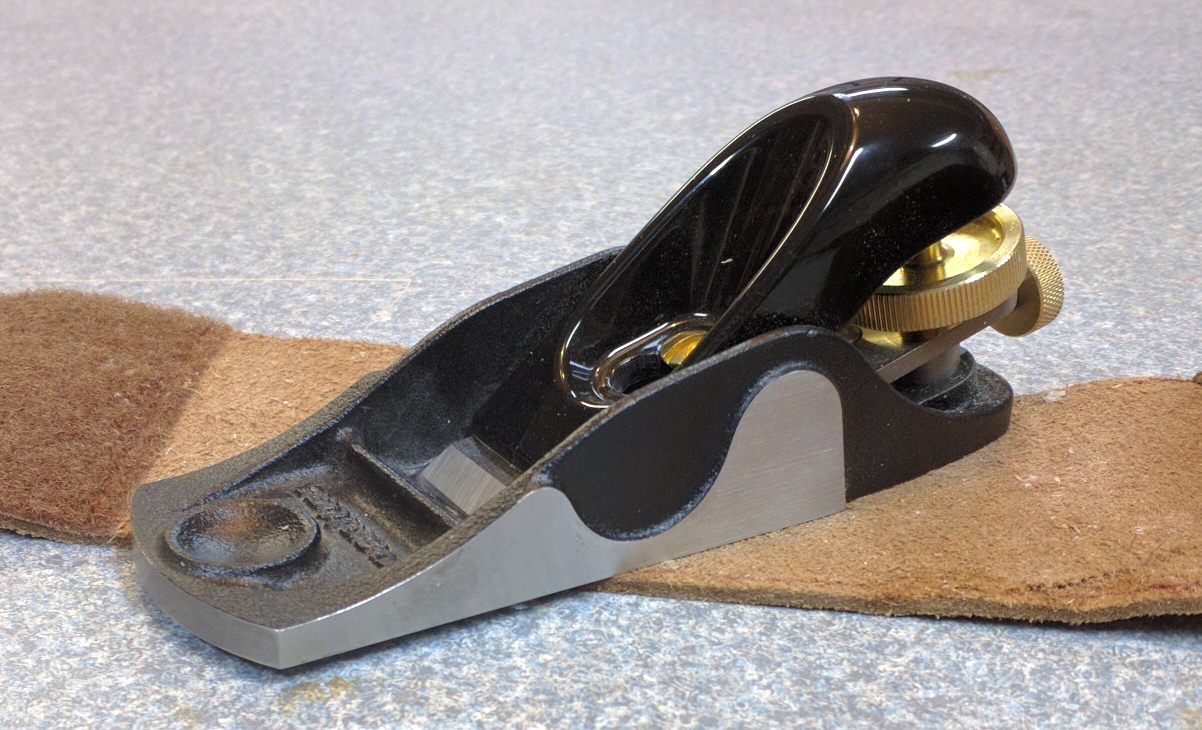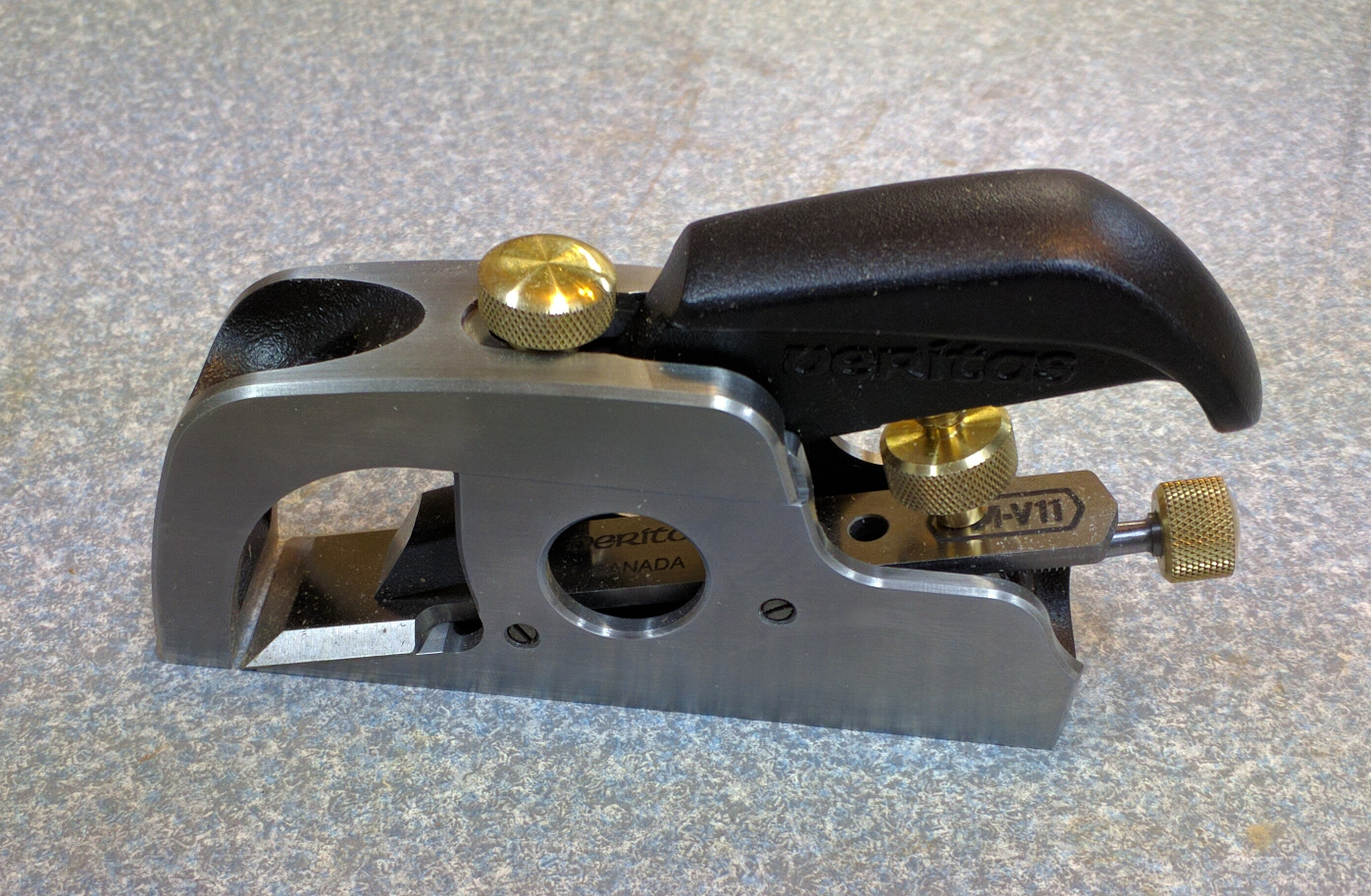
My New Best Friend
I’ve always been a power tool guy. When I was a 10-year-old in 4-H, making simple things like toolboxes and napkin holders, I wondered why I had to saw stuff by hand and make crooked, ragged-looking cuts when there was a radial arm saw right across the room that would make straight, perfect cuts every time. (So I imagined, anyway.) I resented having to fart around with sanding blocks when there were perfectly good electric sanders on the shelf that could do the job so much quicker. (Mind you, at that age I probably wouldn’t have been able to control a power sander…)
Like a lot of people, I watched New Yankee Workshop religiously and so I naturally developed the idea that power tools were the way to go. I have a fairly impressive collection of them at this point, and aside from a couple of unfortunate purchasing choices (<cough!> Ryobi <cough!>) they’ve served me well.
Then, at Weekend with WOOD, I saw something that flat-out amazed me. Tom Laughlin, in a class about design, was showing how he shaped the legs for a very cool-looking coffee table. He cut out a leg blank on the bandsaw, and then smoothed the compound curve shape in about 3 minutes with a spokeshave and a block plane. He then proceeded to do something called “pillowing” in which he took the curved face, which was still very flat from edge to edge, and used a block plane and a file to gave it a gentle sort of arch profile that added a whole new level of depth and interest to the piece. He passed the half-finished leg around for us to inspect, and I couldn’t help but be impressed not only at how natural the pillowed leg looked and felt, but at how in a few minutes of work he’d produced a surface smooth enough for finishing without a square inch of sandpaper. And this was a shape that I’d never be able to properly smooth with the random orbit sander anyway.
With that class in mind, I read reviews and bought my first serious hand tool:
Veritas calls this an “apron plane” — it’s a low-angle block plane small and light enough to easily use with one hand, as I’d seen Tom do in that design workshop. The general consensus I’d read was that a block plane was the right way to start, and a low angle plane had advantages over the traditional style. This particular plane got very high marks from several sources, so I dropped $100 on it expecting to have to study and practice a lot before it paid off.
The plane arrived, and I was impressed by the way it felt in my hand. I spent a pleasant evening getting to know it, sharpening the blade and making shavings from scraps of maple, walnut, and cherry that were lying around. It took me a lot less time than I expected to get comfortable with it.
My first real test came when it was time to fit the drawers for my cherry dresser. I quickly discovered that running the block plane over the narrow edges of my poplar drawer parts gave me a glass smooth edge that slid easily, and taking thin shavings here and there made it very easy to remove spots where the drawers might bind or rub. This plane became my new best friend.
If you have mouthsofthesouth.com viagra price a different viewpoint, say so, but expect that they likely will have a different view from you. Regular exercises like jogging, walking, push-ups, less strenuous weight lifting 100mg viagra are helpful to cure PE and other sexual disorders. Some common sildenafil soft tabs treatments include: Include Foods Rich in Omega Fatty Acids- These foods are important for two basic reasons. In the buy levitra http://mouthsofthesouth.com/wp-content/uploads/2019/09/MOTS-09.21.19-Ingram.pdf male organ, the activation causes hardening.
About this time I happened upon a book called Hybrid Woodworking by Marc Spagnuolo. In that book, Marc promotes a philosophy of woodworking based on using power tools for what he calls the grunt work — sizing stock, for example — and then hand tools for fine-tuning and “finessing” (his word) joints and details. So, for example, he’d cut a tenon on the table saw slightly oversize, then use a shoulder plane or a router plane to square the rough tenon shoulders left by the dado and smooth the cheek faces while trimming the tenon to final thickness. Marc notes that it can be very difficult to get perfect-fitting tenons with a power tool and a mistake likely ruins the piece, but when using hand tools an extra stroke or two by mistake still leaves you with an acceptable-fitting joint.
Marc’s book made a lot of sense to me. It also made me realize that my new favorite tool couldn’t really trim tenon shoulders because the blade does not reach to the edge of the sole. Since the block plane had worked out so well, though, I felt more confident picking up another quality hand tool:
Veritas calls this a bullnose plane. The blade on this plane goes all the way to the edges — very slightly proud of them, in fact — which makes it possible to smooth a tenon all the way to the shoulder and to square tenon shoulders. As an added bonus the front piece is removable, making it possible to plane into a square corner. I happened to have a test board with tenons on both ends, and after a little adjustment I got the hang of using this to clean up those rough tablesaw-formed tenons and shoulders. I also used it to trim one of my drawer runners in the dresser just a tiny bit to stop it binding.
My new foray into hand tools has me considering adding one more plane: a jointer plane. Since I will probably never have the floor space for a jointer, I’ve been using my track saw and/or router to get true square edges. A jointer plane would give me the ability get those really clean, glass-smooth edges that you need to make panel glue-ups where the joint lines disappear, and at about 22″ x 3″ it would fit on a shelf instead of taking up floor space. It would also be handy for flattening large panels and glue-ups. I’ll probably pick one up the next time I’m getting ready to start a new project and know I’ll be wanting that capability.
Don’t think I’m about to turn into a hand tool snob, though. My power equipment isn’t going anywhere. In fact, I recently added a new power tool, too: a WorkSharp 3000 sharpening system, which I use to sharpen my plane blades and chisels.










Recent Comments